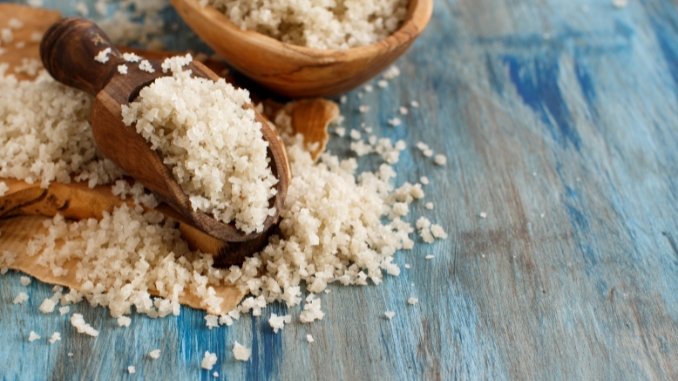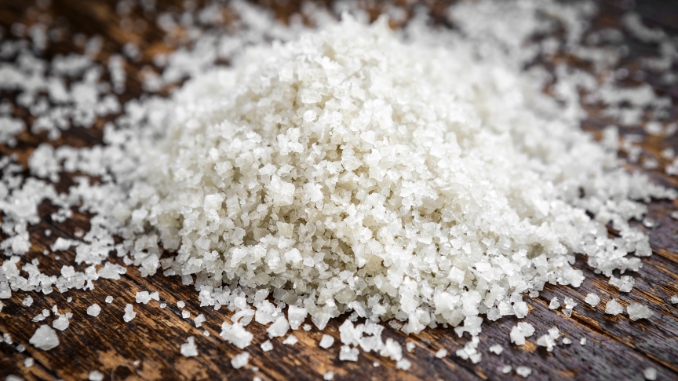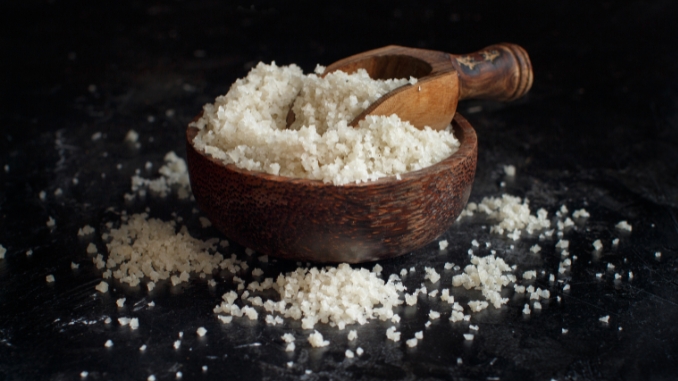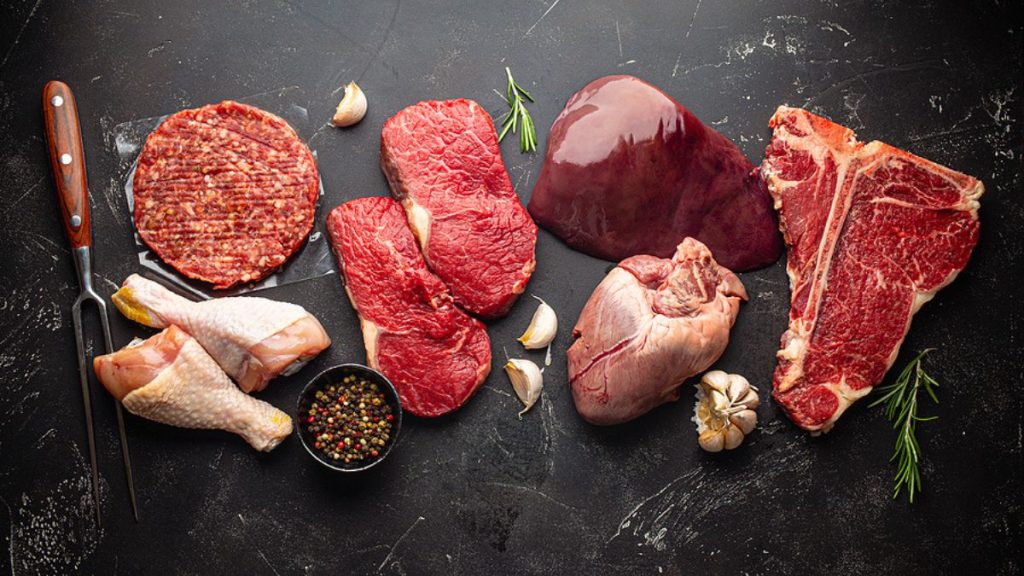Disclaimer: Please note that this information is provided solely for informational purposes only and is not intended as medical guidance. Before initiating any dietary changes, it is recommended to seek advice from a healthcare professional.
Celtic salt, a mineral-rich sea salt from the coastal regions of France, is celebrated for its health benefits and distinctive flavor. Unlike regular table salt and Himalayan salt, sea salts retain higher concentration of essential minerals like magnesium, potassium, and calcium.
Understanding the right amount of salt intake is crucial for health, as both excess and deficiency can lead to serious health issues.
This article aims to guide readers on the optimal daily intake of Celtic salt, balancing its unique properties with health guidelines, and offering practical tips for including it in a balanced diet.
What is Celtic Salt?

Celtic salt, also known as sel gris [1] or grey salt, is an unrefined sea salt known for its high mineral content that retains magnesium, potassium and calcium, unlike heavily processed table salt. It has a distinctive grey color, derived from the clay lining of salt ponds where it’s harvested.
When added to dishes, it offers a briny flavor that enhances culinary dishes.
Recommended Daily Salt Intake
So, how much Celtic salt per day [2] do you actually need? Health organizations like the WHO and FDA recommend consuming less than 5 grams (about one teaspoon) of salt per day. Celtic salt, known for its high mineral content, is often advised in smaller quantities, typically around 1 gram (1/4 to 1/2 teaspoon) per day.
However, individual needs can vary based on several factors:
1. Age
When it comes to how much salt we need, age is important. Different ages need different amounts of salt to stay healthy. Here’s how it works for different groups:
- Children: Kids need less salt than grown-ups because their bodies are smaller, and they don’t need as much. Too much sodium can raise their blood pressure and might cause problems like high blood pressure when they’re older.
- Adults: Most adults should have less than 5 grams of salt a day. But this can change depending on a person’s health and lifestyle.
- Seniors: As people get older, their bodies become more sensitive to salt. Eating too much can raise the risk of high blood pressure and heart disease. That’s why older adults need to cut back on salt to stay healthy.
2. Health Conditions

Some people need to watch how much salt they eat because of their health. For example, those with high blood pressure, kidney disease, heart disease, or diabetes have to be careful with salt, as too much can make their health worse.
- High Blood Pressure (Hypertension): People with high blood pressure are often told to eat less salt, around 1,500 mg a day, to help control their condition. Too much salt can raise blood pressure even more and increase the risk of heart problems.
- Kidney Disease: People with kidney problems should limit salt because their kidneys can’t get rid of extra salt easily, causing fluid buildup and higher blood pressure.
- Heart Disease: For those with heart issues, cutting down on salt helps prevent fluid buildup, which puts extra pressure on the heart and can make their condition worse.
- Diabetes: People with diabetes need to keep an eye on their salt intake because too much salt can raise blood pressure, which is a common problem for diabetics.
Watching salt intake is important to stay healthy and avoid more serious issues.
3. Activity Level
Activity level significantly influences how much salt your body needs each day.
Whether you’re an athlete losing sodium through intense workouts or someone with a more sedentary lifestyle, understanding how your level of physical activity impacts your salt requirements is essential for maintaining proper hydration and overall health.
Balancing salt intake according to your activity level helps ensure your body functions optimally without the risks associated with too much or too little sodium.
- Athletes: Athletes and individuals who engage in vigorous physical activity may require more salt to compensate for the sodium lost through sweat. Sodium is essential for muscle function and hydration, so athletes need to ensure they replenish their sodium levels, especially during intense training or competition.
- Sedentary Individuals: Those with lower activity levels typically need less salt, as their bodies do not lose as much sodium through sweat. Excessive salt in a sedentary lifestyle can increase the risk of hypertension and contribute to weight gain.
4. Climate
The climate you live in can greatly affect your body’s salt requirements.
In hot and humid environments, increased sweating leads to a higher loss of sodium, which leads to a slight increase in salt intake to maintain electrolyte balance and prevent dehydration.
Conversely, in colder climates, where sweating is minimal, the body’s need for salt is reduced.
Understanding how different climates impact salt needs is crucial for ensuring your body remains well-balanced and healthy, regardless of the weather.
- Hot Climates: In hot and humid climates, people tend to sweat more, leading to a greater loss of sodium. In these conditions, individuals may need to slightly increase their salt intake to maintain electrolyte balance and prevent dehydration.
- Cold Climates: In colder climates, where sweating is less of an issue, people may not need as much salt.
However, it’s still important to maintain a balanced intake to support overall health.
5. Diet

Your diet is important in determining your daily sodium intake.
Whether you rely on processed foods or focus on whole, unprocessed meals, the type of diet you follow can drastically affect how much salt you consume.
Understanding the impact of different dietary patterns on sodium levels can help you make informed choices to maintain a balanced and healthy lifestyle.
Here’s how various diets influence your salt intake and how Celtic salt can be incorporated mindfully.
- High-Processed Food Diet: Diets high in processed and pre-packaged foods often contain hidden sources of sodium, leading to an unintentional increase in daily salt intake. Reducing reliance on these foods can help maintain healthier sodium levels.
- Whole Food Diet: Those who consume a diet rich in whole, unprocessed foods like lean proteins, fruits, vegetables, and whole grains may naturally have a lower sodium intake. Adding a small amount of high-quality salt, like Celtic salt, can enhance flavor without exceeding the recommended levels.
- Vegetarian/Vegan Diet: Plant-based diets tend to be lower in sodium. While this is generally positive, individuals following these diets should ensure they consume adequate salt to meet their needs, especially if they are active or live in hot climates.
Specific Guidelines for Celtic Salt

Celtic salt differs from regular salt due to its rich mineral content. Here’s how to incorporate it into your diet:
- Start with Less: Begin with a smaller amount and adjust to taste.
- Use as a Finishing Salt: Sprinkle it on dishes for a mineral-rich flavor boost.
- In Recipes: Incorporate it into meals that benefit from its unique taste.
Note: Balance Celtic salt use with general guidelines for daily salt intake.
Health Benefits of Celtic Salt

Celtic salt is rich in essential minerals like magnesium, potassium, and calcium, contributing to its numerous health benefits. These minerals support improved hydration and electrolyte balance by helping the body absorb and retain water more effectively.
Additionally, celtic salt can enhance the flavor of your food, which may indirectly stimulate the production of saliva and other digestive fluids, potentially aiding in digestion.
Scientific studies suggest that the trace minerals in Celtic salt can support detoxification and help maintain an alkaline pH balance in the body, while more research is needed, existing evidence highlights the potential of Celtic salt to promote overall health when used as part of a balanced diet.
Potential Risks of Overconsumption
Overconsumption of salt, including Celtic salt, can lead to health risks such as high blood pressure, cardiovascular diseases like congestive heart failure or heart attack, and kidney issues due to its sodium content.
Symptoms of excessive salt intake may include swelling, bloating, and increased thirst.
To monitor and adjust salt intake, individuals can read food labels to identify sodium content, reducing the consumption of processed and pre-packaged foods, however, packaged foods which often contain high levels of salt, should be consumed sparingly.
Moderation and awareness of salt intake are crucial for maintaining overall health and preventing associated health risks, especially when it comes to processed foods.
Conclusion
Celtic salt is a type of salt that is packed with minerals and has a special taste.
It can be a good part of a healthy diet because it contains important minerals like magnesium, potassium, and calcium. These minerals help with things like staying hydrated, balancing electrolytes, and better digestion.
Unlike regular table salt, which undergoes processing and loses many of its minerals, Celtic salt retains these nutrients.
Health organizations like the World Health Organization (WHO) [3] and FDA recommend consuming less than 5 grams (about one teaspoon) of salt per day. Celtic salt, known for its high mineral content, is often advised in smaller quantities, typically around 1 gram (1/4 to 1/2 teaspoon) per day.
However, this amount can change depending on your age, health, and how active you are. If you decide to use Celtic salt, you can add it to your meals just like regular salt, but be careful not to use too much. Eating too much salt can cause health problems.
People like athletes, pregnant women, or those with certain health conditions should talk to a doctor to find out how much salt is best for them. By paying attention to how much salt you eat, you can enjoy the benefits of Celtic salt without risking your health.
Maybe you crave salty snacks? Maybe you have gone to the doctor only to have him or her tell you that they can’t find anything wrong with you? If you are experiencing ANY of the symptoms I have mentioned… you may be suffering from adrenal fatigue. So check out this 14-Day Adrenal Health Quick Start Program now!

Rick Kaselj MS, is a leading kinesiologist and injury specialist as well as co-creator of the best-selling Unlock Your Hip Flexors program. Rick creates exercise programs that help people heal injuries and eliminate pain, so they can go back to living a full, active, healthy life.



